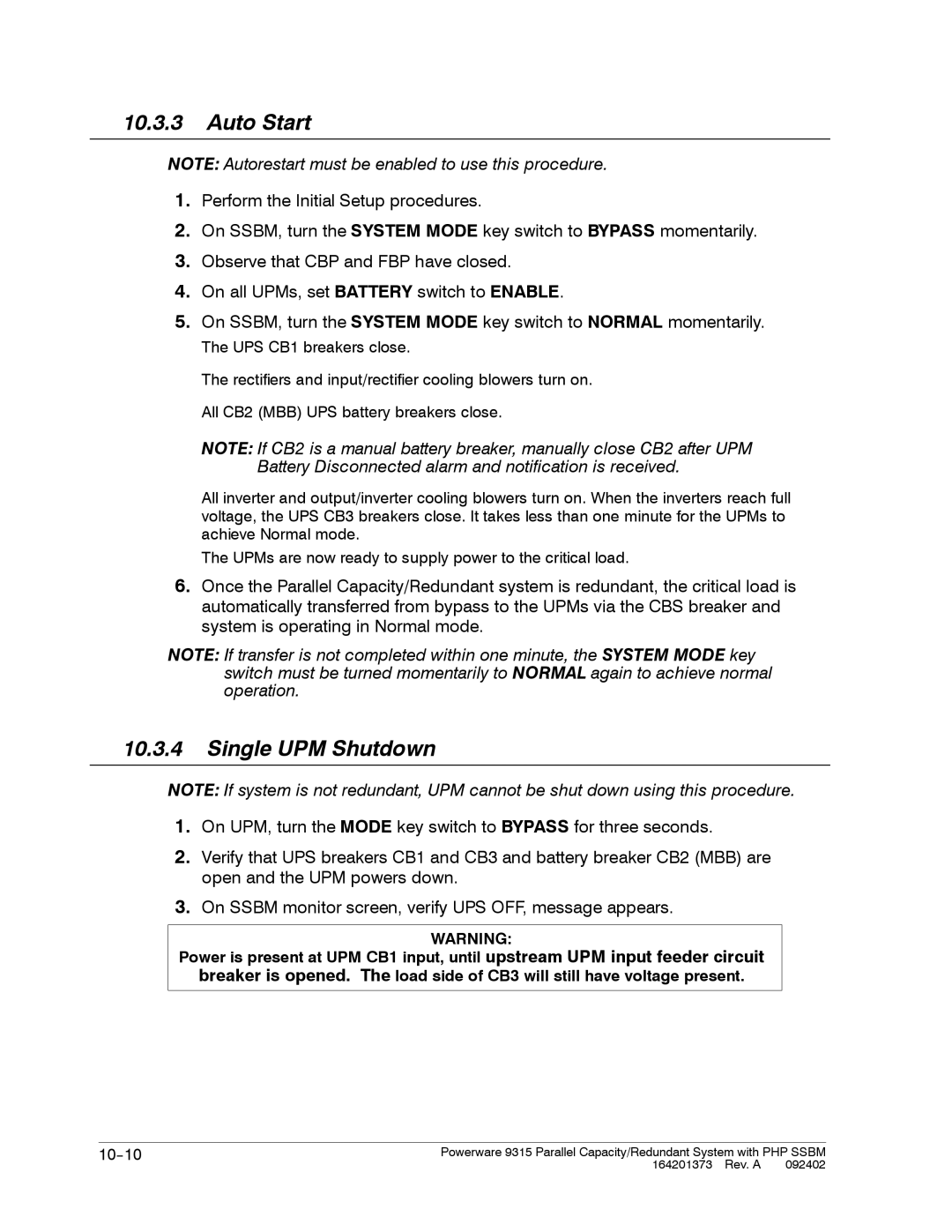
10.3.3Auto Start
NOTE: Autorestart must be enabled to use this procedure.
1.Perform the Initial Setup procedures.
2.On SSBM, turn the SYSTEM MODE key switch to BYPASS momentarily.
3.Observe that CBP and FBP have closed.
4.On all UPMs, set BATTERY switch to ENABLE.
5.On SSBM, turn the SYSTEM MODE key switch to NORMAL momentarily.
The UPS CB1 breakers close.
The rectifiers and input/rectifier cooling blowers turn on. All CB2 (MBB) UPS battery breakers close.
NOTE: If CB2 is a manual battery breaker, manually close CB2 after UPM Battery Disconnected alarm and notification is received.
All inverter and output/inverter cooling blowers turn on. When the inverters reach full voltage, the UPS CB3 breakers close. It takes less than one minute for the UPMs to achieve Normal mode.
The UPMs are now ready to supply power to the critical load.
6.Once the Parallel Capacity/Redundant system is redundant, the critical load is automatically transferred from bypass to the UPMs via the CBS breaker and system is operating in Normal mode.
NOTE: If transfer is not completed within one minute, the SYSTEM MODE key switch must be turned momentarily to NORMAL again to achieve normal operation.
10.3.4Single UPM Shutdown
NOTE: If system is not redundant, UPM cannot be shut down using this procedure.
1.On UPM, turn the MODE key switch to BYPASS for three seconds.
2.Verify that UPS breakers CB1 and CB3 and battery breaker CB2 (MBB) are open and the UPM powers down.
3.On SSBM monitor screen, verify UPS OFF, message appears.
WARNING:
Power is present at UPM CB1 input, until upstream UPM input feeder circuit
breaker is opened. The load side of CB3 will still have voltage present.
| Powerware 9315 Parallel Capacity/Redundant System with PHP SSBM |
| 164201373 Rev. A 092402 |
